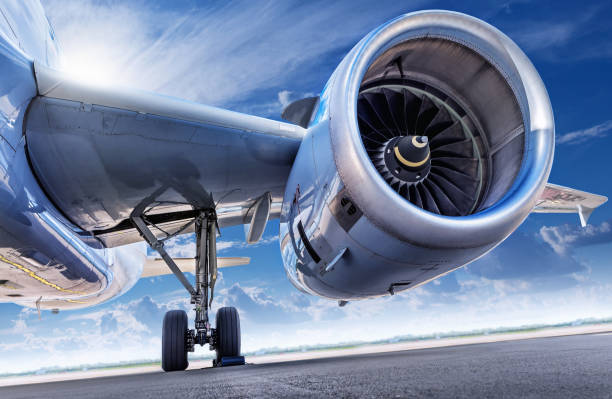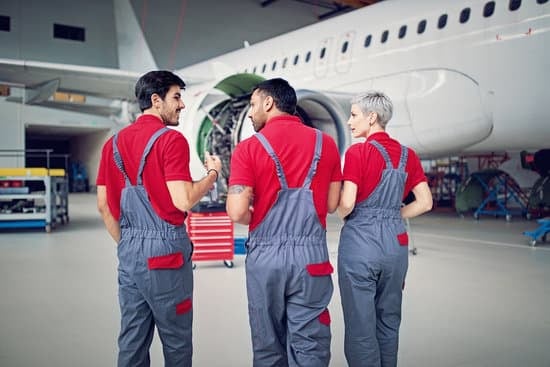Aircraft Engine MRO Market Projected to Grow to $49 Billion by 2027

The aircraft engine MRO market, which was grounded in the early days of the pandemic, continues to recover with a report released in October calling for growth from $30 billion to $49 billion by 2027.
“As a result of a large number of stored aircraft and lower utilization, the aircraft engine MRO demand significantly dropped in 2020. However, in 2021, aviation began to witness a gradual recovery, which led to an increase in passenger traffic and aircraft movements. This has led to an increase in demand for aircraft maintenance, repair, and overhaul activities,” said the report.
The report says growth could be based on:
-
Fleet Expansion: The rapid fleet expansion plans of the airlines and military forces are anticipated to boost further the growth of the aircraft engine MRO market during the forecast period.
-
Lack of Defense Funding = Aging Military Fleet: The aging military aircraft fleet in some countries may generate significant demand, as some of these countries have plans to extend the service life of these aging aircraft due to a lack of defense funding.
-
Next Gen Engines: The introduction of newer generation engines in new aircraft is anticipated to further increase the aircraft engine MRO demand. The new engines will have more expensive material requirements than the older generation aircraft.
-
Advanced Tech: The introduction of advanced technologies that will digitize and automate maintenance activities to increase overall maintenance process efficiency, reduce the overall turnaround time, and improve safety by the engine MRO players is anticipated to boost the growth of the market in the coming years.
Commercial Aviation Segment to Dominate Market
The commercial aviation segment will hold onto its dominant position in the market, mostly due to commercial aviation having a larger fleet than military aviation, and commercial aviation having a higher cost of engine maintenance versus general aviation.
“In recent years, several new contracts have been signed for the maintenance of aircraft engines between airlines and MRO service providers,” says the report.
Recent deals include:
- SR Technics signed a Memorandum of Understanding (MoU) with Vietjet Air to provide MRO services for CFM56-5B engines onboard Vietjet’s Airbus A320 and Airbus A321 aircraft fleet. Under the $150 million contract, SR Technics will provide:
o Engine maintenance
o Component requirements
o Repair
o Technical and training services
o Will set up a new aviation training center as a joint venture
- S7 Technics announced its plan to open a new engine maintenance facility at Sheremetyevo airport (Moscow) for the overhaul of CFM56-5B and -7B engines and Honeywell 131-9A/9B auxiliary power units (APU). The maintenance capacity of the new shop is expected to reach up to 100 APUs and up to 42 engines per year.
“Multiple such service provider partnerships with commercial carriers are extending long into the forecast period for continued service of aircraft engines to be airworthy and safe for flight,” said the report.
Asia Pacific to See High Demand
Asia Pacific is expected to see high demand during the forecast period with several MRO service providers from the United States and Europe establishing maintenance facilities in the region, and several airlines have partnered with engine MRO service providers to develop in-house capabilities in Asia Pacific to trim costs.
Among recent activity in the area:
- Air China announced a joint venture maintenance, repair, and overhaul facility in China. Beijing Aero Engine Services Company Limited will provide MRO support on the Rolls-Royce Trent 700, Trent XWB-84, and Trent 1000 aero engines in the new facility. Air China and Rolls-Royce each hold 50 percent of the shares in the joint venture with a contract amount of about 2.61 billion yuan (about $378.2 million).
- Safran, a large international aircraft engine manufacturer, announced the opening of a new MRO facility in Suzhou, China. The company-owned 5,200 sq meter repair station will help with strategic commitments, linking it to the company’s MRO facilities across the Middle-Eastern and Indian facilities.
- Safran also announced that it will invest up to $200 Million to set up its biggest MRO facility in Hyderabad, India. The facility will be capable of handling up to 300 engine shop visits annually, especially catering to the CFM56, Leap 1A, and Leap 1B engines that dominate the Indian market. This large facility is also expected to be used as an MRO facility for Safran’s Asian engine customers.
“Due to several such investments, government incentivization, and a potential increase in passenger influx, the market is expected to witness significant growth rates in the Asia Pacific region during the forecast period,” said the report.
Aircraft Engine MRO Market to Remain Competitive
The report expects the aircraft engine MRO market to remain competitive with the major players including:
- Lufthansa Technik
- Rolls-Royce Holding PLC
- Raytheon Technologies Corporation
- General Electric Company
- Safran SA
“The major engine MRO providers are entering into long-term partnerships or forming joint ventures to grow their engine MRO customers,” said the report.
One such deal is ST Engineering commercial aerospace business signing a 5-year deal with Safran to provide engine maintenance (shop visits) offload for the CFM56-5B and 7B engines.
“This multi-year agreement will allow ST Engineering and Safran Aircraft Engines to meet the forecasted rise of engine MRO activities as air travel gradually recovers from the pandemic,” concluded the report.
The report did caution that the trend toward long-term contracts in the industry may act as a barrier for new companies to enter the market during the forecast period.



